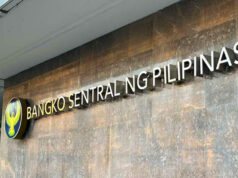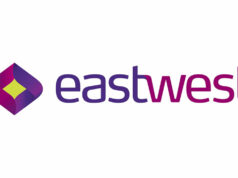Nestor V. Tan, BDO Unibank, Inc. president, gave a very incisive talk to the FINEX general membership recently on the state of the banking industry in the Philippines. He discussed the need for balance in the approach to the regulation of the industry which has seen a major shift in priorities. Prior to the global financial crisis, regulations encouraged economic growth over stability. The present state has shifted towards the other extreme, with the need to ensure stability taking precedence over growth. He also discussed the differences between the developed world and the Philippines, asking in the process whether the regulatory framework should consider said differences. Among these distinctions between the developed countries and ours are: (a) overbanked vs unbanked; (b) dispersed ownership vs. family controlled setup; (c) service fees vs. intermediation fees; (d) transactional vs. relationship banking; and (e) emphasis on internal profits vs growth. He likewise identified key metrics of the Philippine banking industry vis-à-vis its peers like Indonesia, Thailand and India.
As Bankers Association of the Philippines (BAP) president, I am sure Mr. Tan’s speech will receive a lot of attention from our regulators. We expect and hope that his exposition will trigger a review of regulation so that it can be fine-tuned to be responsive to the needs of the country at this stage of economic development.
In this column, my focus would be on one aspect of the critique on regulation — mandatory lending. Three points were made related to this policy intervention. One, in terms of efficiency pain points, the compliance cost as a percentage of revenue in the Philippines is quite high, around 8-9%, which exceeds the 6-7% of Indonesia and the 3-4% of India. Contributing to regulatory cost is mandated lending although it adds less than 1%. Two, the mandated lending for agri-agra in the first quarter of 2016 was shown to be P744.3 billion. Yet the cost of production for all areas planted/harvested for the same period was only P329.5 billion, of which technically the credit requirement for the planted/harvested area would only sum up to P197.7 billion. This is as per data from the Agriculture Credit Policy Council. In other words, the presentation illustrates that the mandated loans is over 300% the needs of the sector. Finally, the mandatory allocation rule is a one size fits all policy not cognizant of bank differentiation whether in size or market focus.
The presentation makes a way clear case for reviewing and even scrapping the mandatory lending requirement. It is poorly designed and it forces lending to a sector whose needs do not reflect such volume of support. It is not market friendly and it forces financial institutions to lend to a sector that it is not designed to serve, thus exposing them to heightened risk level. Their lending decisions can be distorted and there is a potential damage to the banking sector out of bad loans that can lead to the deterioration of health of financial providers.
This writer totally agrees that the agri-agra mandated lending rule is out of sync with market realities. However is the same argument valid when mandating lending to MSMEs?
In the same presentation, the metric of credit to SMEs as a percentage of gross domestic product for 2015 was shown. The Philippine record is 3.7% which pales in comparison to Indonesia’s 10.7% and Thailand’s 42.1%. As a response, the BAP is providing policy inputs to support financial inclusion for unbanked and underbanked individuals and SMEs. Also it is recognized that 69% of Filipinos don’t have an account at formal institutions, while 47% borrow money, but mostly from informal sources (72%) and only few from banks (4%).
For this reason, I would argue that there is still space for a reasonably designed mandatory lending policy in the MSME field considering that 99% of all enterprises in the Philippines are still in this category. With MSMEs contributing up to 30% of the country’s gross value added, would it be too much to ask that these MSME’s get at least 10% share of intermediation flows from our banking sector. However, the definition of who should benefit from the priority lending regulation needs to be re-examined and the mechanics enhanced by way of incentives as against pure penalty. Clearly, the unreasonable issues concerning the agri-agra mandate with its supply-demand mismatch is polluting the good intent of the MSME mandate.
Without some kind of intervention, studies clearly show that banks will engage in credit rationing due to uncertainty issues such as agency problems, asymmetric information, adverse selection, and monitoring problems. The credit-rationing problem is more pronounced in the SME sector because of size, volatility of earnings, opaqueness or lack of transparency, governance, lack of distinction between the business and the enterprise person, etc. The situation is aggravated by structural rigidity in the legal, institutional, and regulatory framework. The tendency to exclude SMEs from lending becomes more pronounced.
The primary rationale for advocating priority lending is market failure when money fails to flow to areas and sectors due to perceived risk as well as urban bias. It constitutes affirmative action so that resources are channeled to vulnerable sectors of the economy, which nonetheless has the potential to increase productivity and spur economic development. It is also part of an inclusive policy so that the small and disadvantaged are able to equitably participate in national growth.
Benel D. Lagua is Executive Vice-President at the Development Bank of the Philippines. He is an active FINEX member and a long time advocate of risk-based lending for SMEs.



